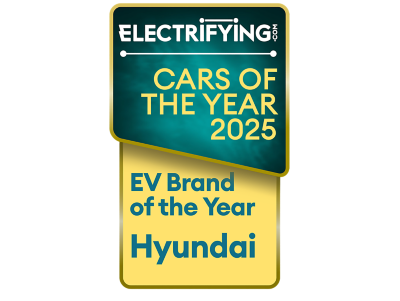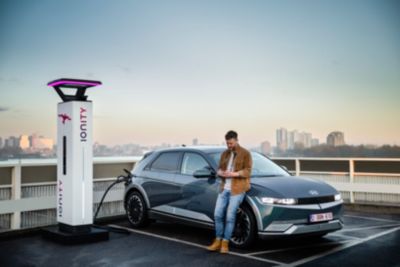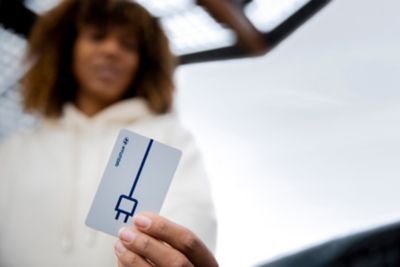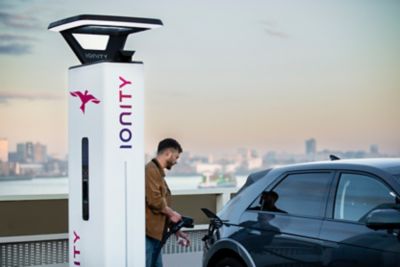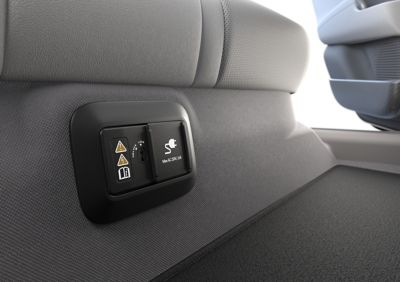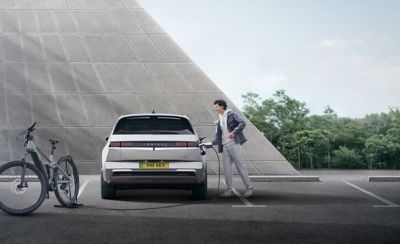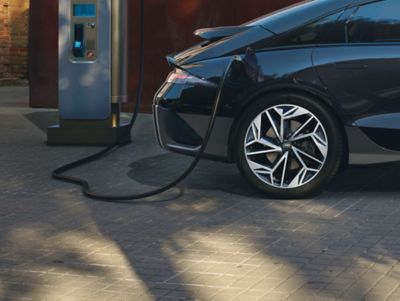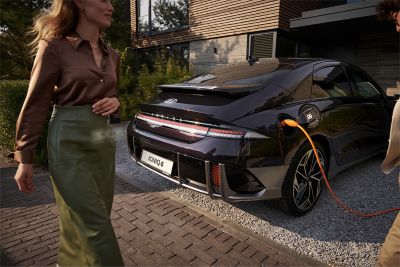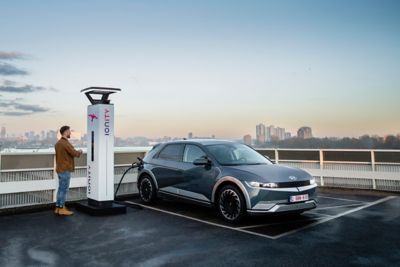Charging your electric car in public.
We'll help simplify the process of charging your Hyundai in public from the cables you will come across, to how you can find your nearest station.
Public electric car charging stations.
Types of public electric car charging.
There are two types of electric vehicle charging you should be aware of at public stations:
- Alternating current (AC) charging
- Direct current (DC) charging
AC charging is typically less energy-intensive which makes it slower. When you charge at home using a conventional plug or home electric car charger, and even at public stations, you will be using AC.
DC charging can be completed at greater speeds and is typically found at public charging stations.
Labels at public electric car charging stations.
New labels can now be found on stations so electric car drivers can identify compatible recharging options.
For example, if your electric vehicle has a "B" level and the charging station has a "B" label, they are compatible. On the car, the symbol is black and on the charging station, the symbol is white.
What factors affect EV charging speeds?
As we've learned, every station and plug is not created equal - or better said: many factors affect the speed at which your electric car can charge in public, such as the:
- Size and state of charge of the battery
- Max. charging rate of the on-board-charger
- Max. charging speed of the public charging station
- External temperatures - batteries do not like extreme heat or cold
Charge myHyundai.
Charge myHyundai provides a comprehensive and easy-to-use solution, giving you access to an extensive public UK charging network with over 48,5002 electric charging stations.
How much does it cost to charge an electric car?
The cost of charging your electric car depends on a few variables. You must consider the public stations you use, the size of your car battery and the tariffs you choose.
The cost of public charging stations depends on the charging speeds they provide. An ultra-fast charging station would imply a higher cost than an AC station.
Vehicle-to-load charging.
Vehicle-to-Load technology allows you to freely use, or charge electric devices such as electric bicycles, laptops, and even camping equipment whilst on the move at a standstill. What's more, this technology effectively replaces the need for fuel-powered generators in emergencies or remote locations, allowing you to power your home, cabin, or camping site with up to 3.6 kW of electricity.
Learn more about going electric.
Explore alternatives to public charging or discover how far your electric car can go.

